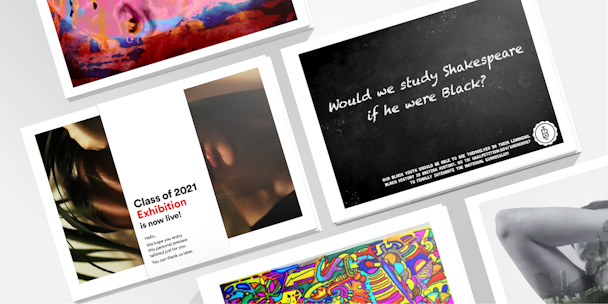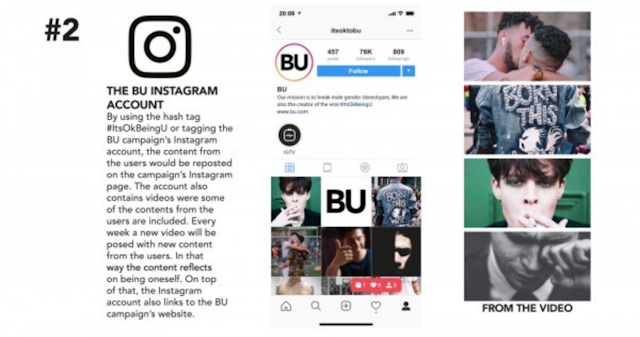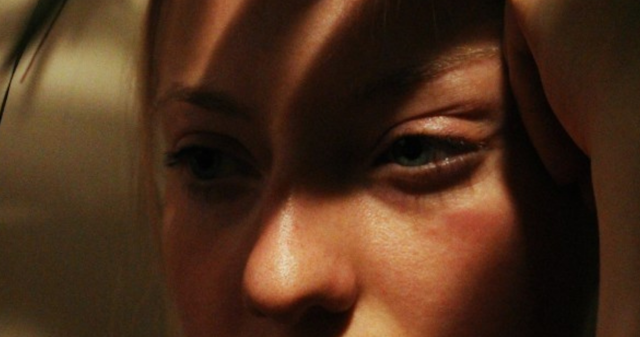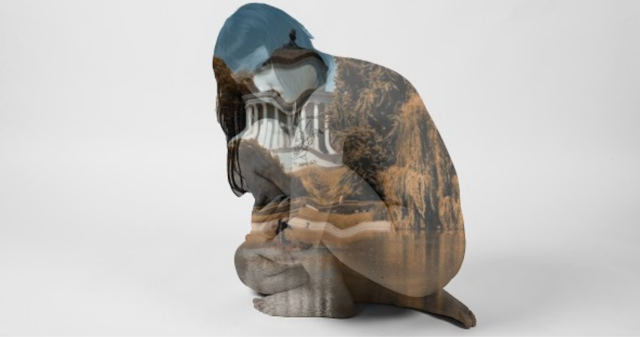Putting the ‘i’ in advertising: why creative should be personal, purposeful & in print
“Be the change that you wish to see in the world”. The famous quote attributed to Mahatma Ghandi is as true for advertisers today as it is for the next generation of creative student talent coming through the ranks. They want to see positive change – and that is what’s driving their creative ambitions towards more human, personal advertising that reflects the expectations of the new consumer.

Putting the ‘i’ in advertising: Why creative should be personal, purposeful & in print
Despite the anxiety and mental strain experienced by student graduates completing their final year degree courses during a global pandemic, many have turned these challenges into an opportunity to showcase their work through a more critical lens. By putting themselves and their experiences front and center of their projects, brands should take note and be more personal and human-centric too.
By focusing their digital communication to reach consumers in the way they want to be spoken to, marketers have an opportunity to utilize the power of print to create a more tactile, personal experience that speaks to today’s consumers, amplifying this relationship in a much more meaningful way.
“We are humans at the end of the day and connect emotionally so a way to connect to our audiences will always be focusing on different human aspects as we feel heavily towards each other, naturally,” said Emma Bentley, one of 65 student graduates featured as part of The Drum and Canon’s ‘Class of 2021’ exhibition, who set out to tackle institutional racism in the current UK National Curriculum. “Now is a time to reflect on what you’re putting out into the world and create work that pushes stereotypical boundaries as people just want acceptance of who they are.”
“I chose to focus on a personal aspect as I had that huge drive to do it; it’s the change I want to see in the world and I believe with more campaigning that it will happen,” added Bentley. “I think [print] still catches people off-guard even though we consume so much advertising daily. I think we have all desired going outside and actually putting down our screens so much more since the pandemic hit, that there will always be opportunities to still make an impact through print.”

For Jonas Baujault Borresen, the personal element of his final year degree project was to make people feel good about themselves and to encourage men to feel comfortable in their own skin.
“We need brands to think more about sustainable ways of how they’re communicating, where they should speak with us instead of about us,” he said. “Brands have the opportunity to be at eye level with us and talk about things we can relate to. Advertising has a huge impact on how we look at the world, and therefore brands have a huge voice in making the world a better place.”

The isolation and mental health impact brought on by the pandemic inspired Rebecca Gandy to open a door of self-reflection, starting her journey into a visual photographic documentation of her feelings.
“Human emotions are widely impacted by the people around us,” she said. “If advertisers spent more time looking critically at worldly issues, they may be able to captivate a wider audience. There’s an opportunity for the advertising industry to work with more human and emotional aspects but careful consideration should be given to the effect of the advertising. The beauty of art is that it usually comes from a raw or emotional place within an individual and therefore comes across as authentic. In this way, the audience feels a stronger sense of empathy to what they are viewing.”
“In an age where everything is digitalized and with the mass consumption of images through social media ever growing, it is actually quite rare to physically hold an image; this is something that is getting lost but is still greatly adored and should be taken advantage of in a professional setting,” said Gandy. “Despite digital formats being considered ‘safer’, photographs in print form provide both the artist and consumer with a greater sense of ownership and a stronger connection.”

As an immigrant living in the UK, Asha Sitarz was keen to portray the sense of belonging she felt in the place that she calls home. To convey that visually, Sitarz projected images on her body, posed to show the uneasiness and emotions she feels.
“Advertisers should rethink the way their campaigns affect consumers and start showing ‘real’ rather than a ‘perfect’ and ‘impossible to have’ life,” said Sitarz. “I have consciously shown my own body the way it exactly is, rather than make flattering poses or editing the ‘imperfections’ in post-production.
“I wish the advertising industry would move in that direction as well to make people fall in love with their bodies again. Customers’ needs have changed – the advertising industry needs to make a change towards a more human, down-to-earth approach.”

Matilde Merli chose to focus her creative idea based on a “journey of self-therapy; of understanding the emotions that are gripping my heart and mind which many times we are not able to understand until we see them on a more concrete level, in shapes and colors.”
“I think the 21st century has lost a lot in terms of feelings and emotions in what we do, and only artists have kept that idea of hope,” she said. “Advertisers should be more understanding towards self-therapies and emotions rather than looking for artists to create the usual marketing requests.
“I believe this is a time of change and print is an amazing way to take your art from your everyday sketchbook to make something greater and different. We should give more attention to art prints over digital work to create something tangible.”

To explore the work and learn more about the students behind each project, register for the ‘Class of 2021’ virtual exhibition here.
Content created with:

Canon Europe
As the world’s leading imaging brand, we’re committed to driving advanced technologies and celebrating innovation in image capture, print and other technolo...
Find out more
